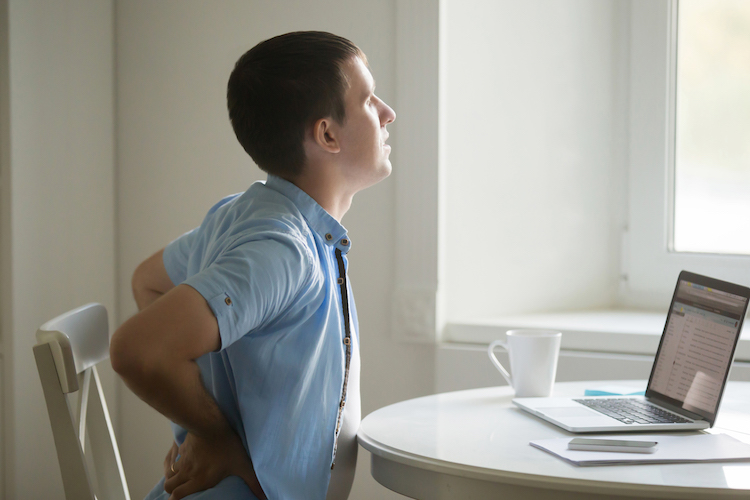Is back pain stopping you from being you? Causing you to suffer through activities that you love to do?
If so, you are not alone… over 80% of the population will suffer from back pain sometime in their lives! And it typically it gets worse as we get older.
As you sit around the table with your friends, co-workers, or family, you will discuss all kinds of reasons why people have back pain…
Arthritis…Genetics…Degenerative Changes…Bulging Disc/Herniated Disc.… the list goes on!
These are all great possibilities on what is going on INSIDE your spine. But most times these are not the CAUSE of the pain.
***If we’re going to get technical… Here’s the definition of the word CAUSE: make (something, typically something bad) happen.
The cause of the lower back issue isn’t typically what’s going on inside your back but something else around the back that could be putting too much pressure and force on the lower back resulting in pain.
If you want to find out the CAUSE of the back pain, take a look at your thighs (also known as the hip flexors).
I want to share with you a recent experience I had with a patient with chronic lower back pain that has been suffering for years. He had the X-Rays and MRIs. He went through physical therapy, chiropractors, masseuse, and acupuncture. All of these treatments were focusing on back flexibility and core strength.
“Bill” had pain across his lower back. He would suffer when he tried to stand up after sitting for a few minutes (he couldn’t stand up straight until he loosened up), he would have to lean over a grocery cart when he went shopping, and he was losing height because he was hunching over. The only time “Bill” had relief was when he was sitting or laying on his side.
After 10 minutes of the assessment, “Bill” came out and said he spent years behind the desk and he was a side sleeper. Light bulb just went off. He spent over 20+ hrs in the bent position. What could that mean?????
Check the HIPS!!!
Majority of the population are in the bent position for more than 15 hours a day!!!
How is that possible?
- Side Sleeper: 8 hours
- Eat breakfast Sitting: 30 minutes
- Driving to Work: 30 minutes
- Work: 4 hours
- Eat lunch sitting: 30 minutes
- Work: 4 hours
- Drive Home: 30 Minutes
- Eat dinner sitting: 30 minutes
- Watch TV/Read book: 3 hours
TOTAL: 21 hours and 30 minutes!!!
So here’s the secret…
When you are in a bent position, your hip flexors (muscles that start from the spine and are stretched to the top of your thighs) are in a SHORT position.
As you stay in the bent position the muscle keeps getting shorter and shorter and tighter and tighter.
Then when we try to stand up straight, the hip flexors are too tight and pull on your lower back CAUSING more pressure and pain.
When you sit or hunch over that grocery cart, you put the muscles on slack and allow relief.
So here’s a super quick self-test…
- Do you get relief sitting?
- Do you get relief hunching over a grocery cart?
- Do you get pain when you try to stand up after sitting for a while or getting out of bed?
- Do you get pain standing for more than 10 minutes?
- Do you have a hard time standing straight up with good posture?
If you said yes to 3 out of the 5 questions, you have a good chance of having tight thighs!
Here at Hess Physical Therapy, we have low back specialists that specifically will look at the CAUSE of the lower back pain. We make sure to talk with you about specific activities that you are having pain with and go through a thorough examination to check the lower back and thighs that may CAUSE the lower back pain. The next step will be creating an individualized program to FIX the problem and get you on your way to feeling well again.
For more information on the programs that we offer to relieve your back pain, call us today! We are happy to chat with you about your back pain and how we can help start the process of getting you back to normal.
Our locations:
- Kennedy: (412)-771-1055
- Crafton: (412)-458-3445
- Allison Park: (412)-487-2787
- Bethel Park: (412) 835-2626
- Atlasburg: (724) 947-9999
Website: www.hesspt.com
Disclaimer: this information is "not medical advice" and is used at the site visitor's own risk.

